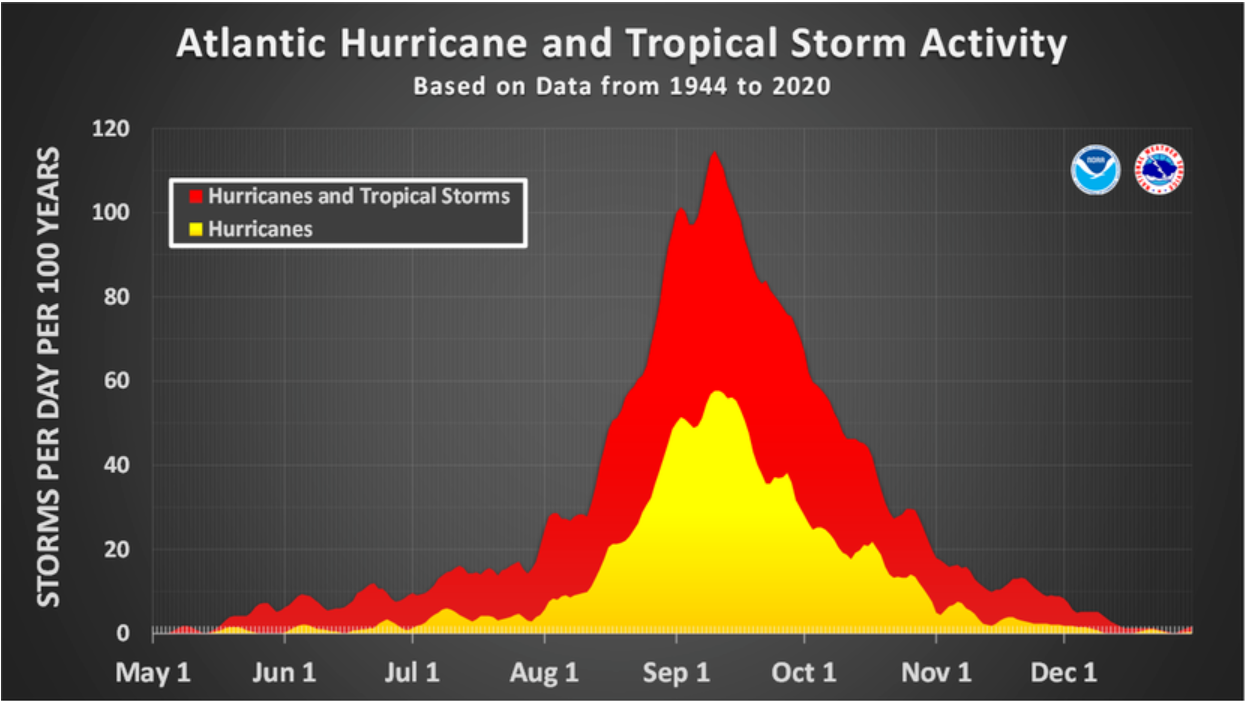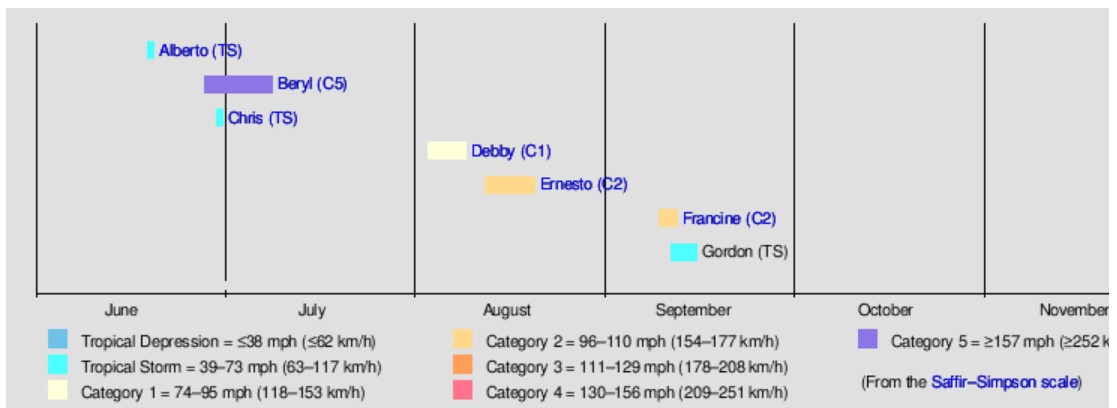4 reasons why the 2024 Hurricane Season has seemed to cool off
Written by Meteorologist Mary Wasson
Last updated 9/16/2024, 2:11:38 PM
The peak of hurricane season has passed (September 10), but we have only had 8 named storms so far.

Earlier this year, we anticipated an active hurricane season due to all the necessary parameters. The National Hurricane Center's original forecast was 17-25 named storms, 8-13 hurricanes, and 4-7 major hurricanes.
The 2024 hurricane season started with Tropical Storm Alberto on June 9th. This was followed by a record-breaking storm, Hurricane Beryl, which was the earliest Category 5 hurricane in the Atlantic Basin. After that, we had Tropical Storm Chris and Hurricanes Debby, Ernesto, and Francine. Currently, we have Gordon in the Atlantic Ocean and soon-to-be Helene moving in.

While it was expected to be an active year, the tropical season turned out to be less active than anticipated. Here are a few reasons why and how it led to a lower-than-average season.
1.) El Niño Lingered: This year, we are experiencing an El Niño event, which typically has a significant impact on hurricane activity. El Niño increases wind shear over the Atlantic, making it harder for hurricanes to form and intensify. This tends to suppress the number and strength of storms in the Atlantic basin. La Nina, which is more conducive for tropical systems, has been delayed for another month.

2.) Saharan Dust Takeover in August: There was an abundant amount of dry, dusty air during August. High amounts of Saharan Dust can inhibit hurricane formation by making the atmosphere less conducive to storm activity.
3.) Atmospheric Conditions: High-pressure systems might be affecting the Atlantic hurricane basin this year. High-pressure systems can create unfavorable conditions for storm development.
4.) African Monsoons: This year, the monsoon storm track was a little farther north than usual, pushing the tropical systems into an environment with cooler water and drier air, which are not ideal conditions for tropical development. Typically, tropical systems develop as a low-pressure wave moves off the west coast of Africa near the Cape Verde Islands.
While the latest forecasts have trended lower in the storm department, we will still be here to keep you up to date on developing systems.